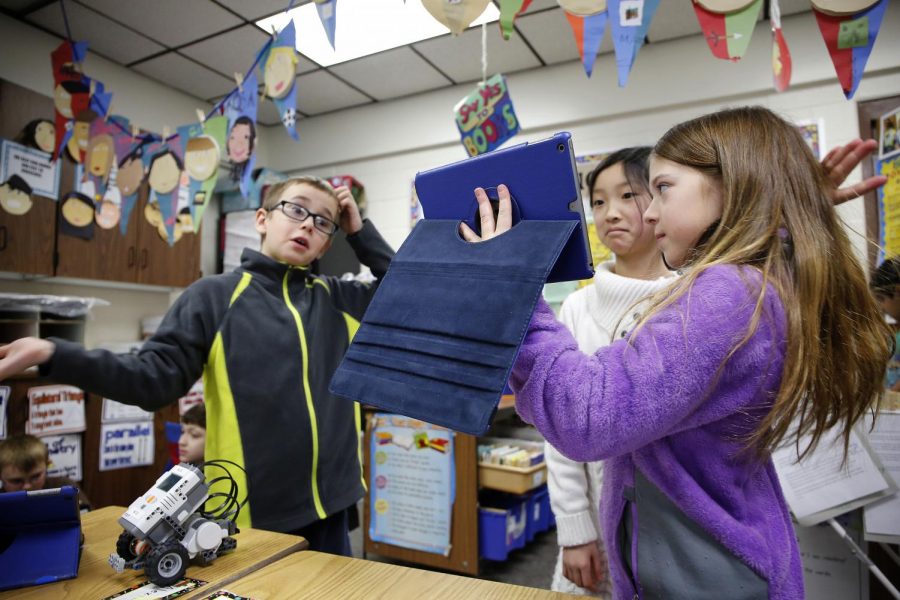Hegde: How to help children succeed in a technology-filled future
Implementing technology into the lives of elementary school students is beneficial, and will advance the younger generation.
In education alone, K-12 spending on edtech devices and programs has grown from $7.2 billion in 1998 to a projected $21 billion in 2015, according to the U.S. Department of Education. (Chuck Berman/Chicago Tribune/TNS)
October 9, 2018
When I was in elementary school, “Computer Time” took place once a week, and it involved a half-hour session in the computer lab, learning things such as how to properly type or how to use different computer applications. Nowadays, young children are already knowledgeable on how to use all the latest technologies before ever going to school — my little cousin hasn’t entered preschool yet but is easily able to maneuver through his dad’s iPhone to find his favorite apps.
If the basic uses of current technology is known to children, what can a school — the place in which kids learn the most — do to challenge children and help them use their devices in the most effective ways possible? As advanced technology continues to be created, elementary schools are correct in moving with the world and providing technology-based curricula for their students.
RELATED: Nadler: The babysitting iPad needs to go
Nancye Blair, a member of the National Association of Elementary School Principals, believes she knows how technology should play a key role in the education of students. She writes, “It is no longer sufficient for students to have less access to technological tools than the teacher.”
In the past, electronic devices to help aid the class sufficed for students to effectively learn concepts. However, according to Microsoft’s IT Academy, “More than 50 percent of today’s jobs require some degree of technology.” This also suggests that by the time this generation of elementary-schoolers are trying to get jobs, the percentage will be even higher.
Furthermore, technology is bound to continue propelling forward, meaning that the youngest generation will be faced with the challenge of staying up to date on technology that hasn’t even been imagined yet. To stay on a steady course, students cannot merely watch a teacher interact with electronic devices — hands-on learning applies here, too.
RELATED: Student programmers compete at Hackathon
Much of the argument against kids using electronic devices in school springs from the idea that they will pursue other activities on the laptops, damaging their education. However, schools’ electronic devices often contain numerous filters and restrictions that prevent students from accessing unrelated content. If the age to get technological devices for entertainment use has been steadily decreasing — I know third-graders with iPads — then why not encourage children to use the same devices for academic purposes?
Blair of the principals’ association said one of the most important parts about allowing children to work on electronic devices was the “establish[ment of] an authentic audience.” With the help of the internet, children will get the chance to share their works and projects on a larger network than simply their parents.
While some may have concerns about online safety, more exposure to technology in an academic setting could assist kids in learning how to wield technology safely and effectively at a young age. More importantly, children can feel like they have a voice in a society that tends to convey the opposite.
In two years, according to a Cedar Rapids Gazette article, “every Cedar Rapids secondary student will have a computer.” This is a step past just implementing technology in a classroom; it is ensuring that students are able to take their learning home with them. Elementary schools in Iowa are taking the steps to ensure their students are getting proper preparation for the future awaiting them — the rest of the schools in the nation should follow.
The eventual goal would be that someday, technology isn’t just a part of the curricula for elementary-schoolers rather, it is the foundation of the framework of learning.






